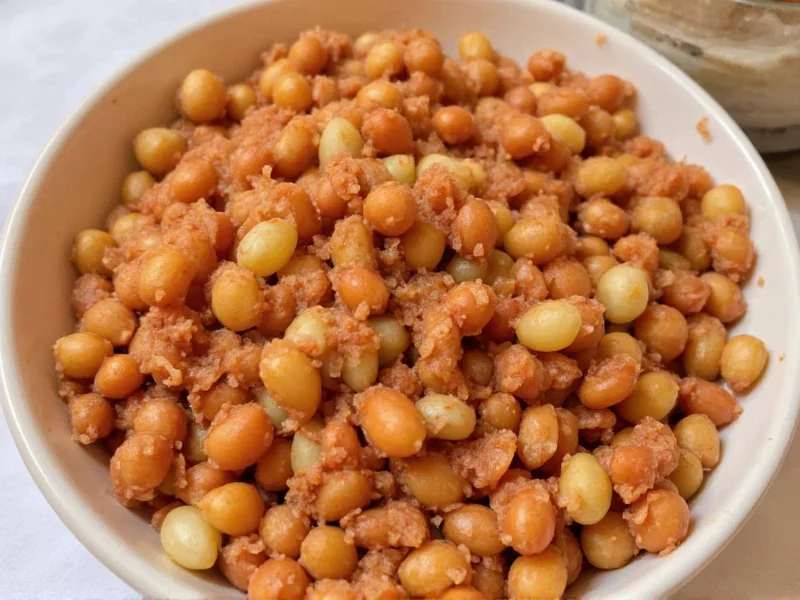When your recipe calls for annatto paste but you're staring at an empty spice cabinet, knowing the right substitute can save your dish. Annatto paste, made from achiote seeds, delivers that signature reddish-orange color and earthy flavor essential in Latin American, Caribbean, and Filipino cuisines. Whether you're making recado rojo, arroz con pollo, or cochinita pibil, these practical alternatives maintain both visual appeal and taste profile without compromising your cooking.
Understanding Annatto Paste and Why Substitutes Matter
Annatto paste combines ground achiote seeds with garlic, vinegar, and spices to create a versatile cooking ingredient. Its primary functions are providing vibrant color and subtle earthy flavor with hints of pepper and nutmeg. When seeking annatto paste substitutes, consider whether your priority is matching the color, flavor, or both. Most home cooks need alternatives because achiote seeds remain specialty items outside Latin American markets.
Top 5 Annatto Paste Substitutes Ranked
Not all substitutes work equally well across different dishes. Your choice depends on whether color or flavor matters more for your specific recipe. Here's how the top options compare:
| Substitute | Color Match | Flavor Match | Best For | Ratio to Replace 1 Tbsp Annatto Paste |
|---|---|---|---|---|
| Sweet Paprika | ★★★★☆ | ★★★☆☆ | Rice dishes, soups | 1½ tsp paprika + 1 tsp oil |
| Smoked Paprika | ★★★☆☆ | ★★★★☆ | Meat rubs, stews | 1 tsp smoked paprika + ½ tsp sweet paprika |
| Turmeric + Paprika | ★★★★★ | ★★☆☆☆ | Color-critical dishes | ¼ tsp turmeric + 1 tsp paprika + 1 tsp oil |
| Tomato Paste Blend | ★★★☆☆ | ★★★★☆ | Moist dishes, braises | 1 tbsp tomato paste + ½ tsp paprika |
| Achiote Oil | ★★★★☆ | ★★★★☆ | Authentic Latin recipes | 1½ tbsp achiote oil |
Detailed Substitute Analysis
Paprika: The Most Accessible Option
Sweet paprika provides the closest color match to annatto paste without dramatically altering flavor. For annatto paste substitute for recado rojo, combine 1½ teaspoons sweet paprika with 1 teaspoon neutral oil and a pinch of garlic powder. Smoked paprika adds depth for meat dishes but may overpower delicate recipes. This substitute works particularly well as an annatto paste substitute for rice where color matters more than complex flavor.
Turmeric: For Vibrant Coloring
When color takes priority over authentic flavor, turmeric delivers brilliant yellow-orange hues. Use sparingly—¼ teaspoon turmeric combined with 1 teaspoon paprika mimics annatto's coloring without the bitter aftertaste pure turmeric creates. This blend serves as an excellent annatto paste replacement for coloring in large-batch cooking where subtle flavor differences get diluted.
Tomato Paste and Paprika Combination
For dishes requiring moisture like stews or braises, mix 1 tablespoon tomato paste with ½ teaspoon paprika and 1 teaspoon vinegar. This homemade annatto substitute without achiote maintains texture while delivering earthy notes. The tomato base prevents the bitter edge some substitutes develop, making it ideal for slow-cooked dishes where flavors meld over time.
Achiote Oil: The Authentic Alternative
If you have achiote seeds but no time to make paste, create achiote oil by heating ½ cup oil with 2 tablespoons seeds for 5 minutes. Strain and use 1½ tablespoons per tablespoon of paste required. This method preserves the distinctive flavor profile better than any seedless substitute, making it the top choice for annatto seed substitute for traditional recipes.
Saffron: Premium Option for Special Occasions
For celebratory dishes where budget matters less than perfection, steep 15 saffron threads in 2 tablespoons warm water. While significantly more expensive, saffron provides unmatched color and a complementary floral note that works surprisingly well in rice dishes. Use this substitute when hosting guests who appreciate authentic presentation.
Recipe-Specific Recommendations
Not all substitutes work equally across different dishes. Match your alternative to your specific cooking application:
- For Arroz con Pollo: Use sweet paprika blend (1½ tsp paprika + 1 tsp oil + pinch garlic powder) to maintain traditional yellow-orange color without overpowering chicken flavor
- For Cochinita Pibil: Opt for achiote oil or tomato paste combination to preserve the complex marinade chemistry
- For Cheese Coloring: Turmeric-paprika blend works best as it won't alter dairy's delicate flavor profile
- For Vegan Dishes: Tomato paste substitute adds umami depth that complements plant-based ingredients
Avoid These Common Substitution Mistakes
Some popular suggestions create disappointing results. Avoid:
- Using plain turmeric alone (creates bitter, medicinal flavor)
- Substituting chili powder (adds unwanted heat and changes flavor profile)
- Using food coloring alone (provides color without necessary flavor dimension)
- Overcompensating with multiple substitutes (creates muddy, indistinct flavors)
Creating Your Own Annatto Substitute Blend
For consistent results across multiple recipes, make a batch of versatile substitute:
Basic Annatto Substitute Blend
Mix ¼ cup sweet paprika, 2 tablespoons neutral oil, 1 tablespoon garlic powder, 1 teaspoon cumin, and 2 teaspoons vinegar. Store in airtight container for up to 2 weeks. Use 1½ tablespoons per recipe tablespoon required. This blend serves as a reliable annatto paste substitute for everyday cooking when achiote paste isn't available.











 浙公网安备
33010002000092号
浙公网安备
33010002000092号 浙B2-20120091-4
浙B2-20120091-4